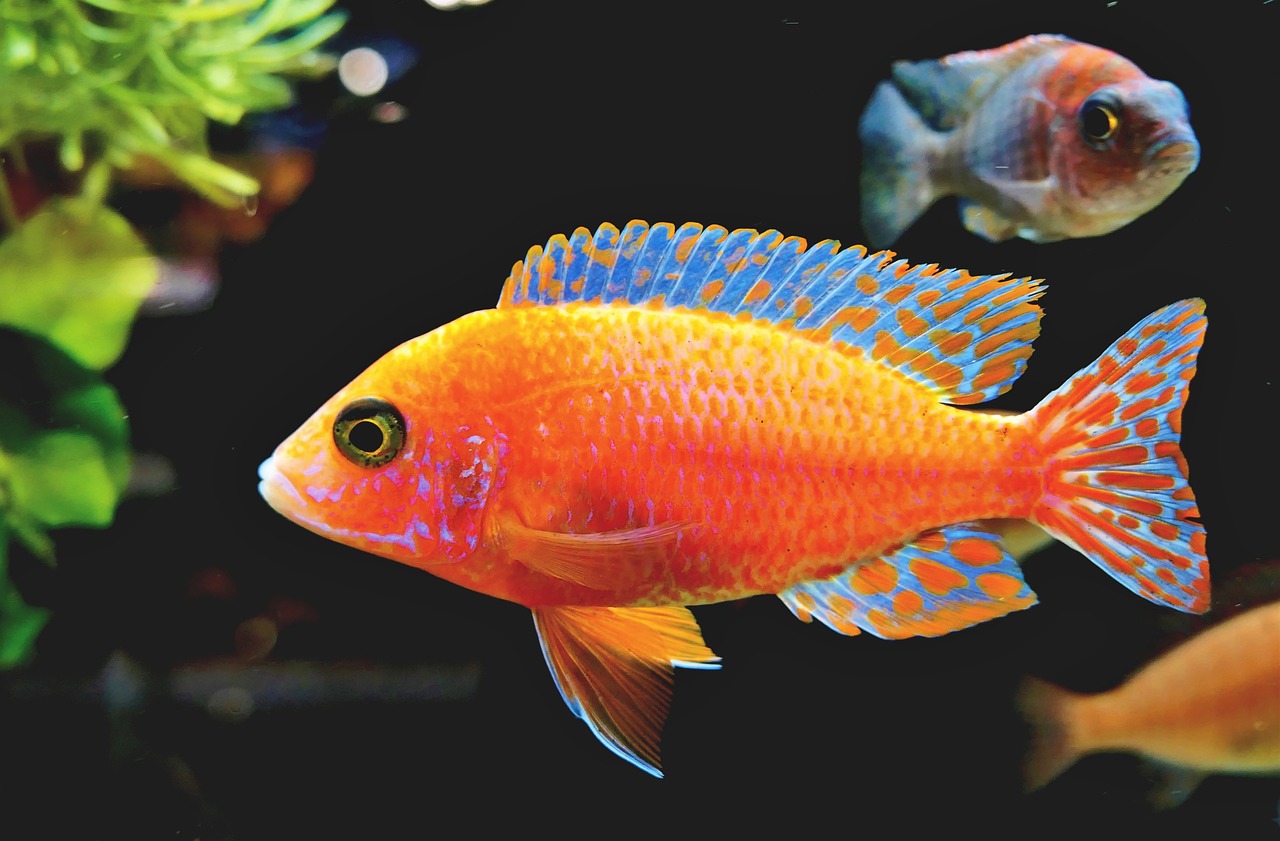Table of Contents
![]()
Introduction
A community aquarium is a captivating and rewarding way to bring a slice of aquatic life into your home. By combining different species of fish and aquatic creatures that thrive together, you can create a lively and harmonious underwater environment. This article provides a detailed guide on setting up a community aquarium, ensuring you cover all essential aspects to maintain a healthy and visually appealing tank.
Planning and Research
Before diving into the setup process, thorough planning and research are crucial. Understanding the needs of different fish species and the requirements of the aquarium is key to creating a balanced environment.
Researching Community Aquarium Requirements
- Understanding Fish Compatibility: Research fish species that are compatible with one another. Consider factors such as temperament, size, and environmental needs to prevent aggression and ensure a harmonious tank.
- Determining Appropriate Tank Size: Larger tanks provide more stable water conditions and offer more room for fish to swim and establish territories. A 20-gallon tank is often recommended for beginners, but larger tanks are beneficial as your hobby progresses.
- Identifying Equipment Needs: Different types of equipment, such as filters, heaters, and lights, are essential for maintaining water quality and providing a suitable environment for your fish.
Budgeting
- Initial Setup Costs: Budget for the tank, equipment, substrate, decorations, and the initial stock of fish. Costs can vary widely depending on the size of the tank and the equipment you choose.
- Ongoing Maintenance Expenses: Plan for regular expenses such as water conditioners, food, and replacement parts for equipment.
Setting Goals and Expectations
- Desired Aesthetic: Decide on the look and feel of your aquarium. Whether you prefer a natural aquascape or a more decorative setup will influence your choice of substrate, decorations, and plants.
- Types of Fish and Invertebrates: Select species that are compatible with each other and fit your tank’s size and environment.
- Long-Term Maintenance: Be prepared for the ongoing care required to keep the aquarium in good condition, including regular cleaning and water testing.
Choosing the Right Equipment
The success of your community aquarium depends heavily on the equipment you choose. Here’s a breakdown of essential components:
Aquarium Tank
- Size and Shape: Choose a tank size that fits your space and allows for a diverse selection of fish. Taller tanks can limit swimming space, while longer tanks provide more horizontal space for fish to swim.
- Material (Glass vs. Acrylic): Glass tanks are less prone to scratching but heavier. Acrylic tanks are lighter and offer better clarity but can scratch more easily.
Filtration System
- Types (Hang-on-Back, Canister, etc.): Select a filter that provides adequate filtration for your tank size. Hang-on-back filters are common for beginners, while canister filters offer more powerful filtration for larger setups.
- Filtering Capacity: Ensure the filter can handle the tank’s volume and the bioload of the fish you plan to keep.
Heater
- Temperature Requirements: Choose a heater that maintains a stable temperature suitable for the fish species you’re keeping. Most tropical fish require a temperature range of 74-78°F (23-26°C).
- Heater Types (Submersible, Inline): Submersible heaters are placed inside the tank and are commonly used. Inline heaters are installed outside the tank and are suitable for larger systems.
Lighting
- Types of Lights (Fluorescent, LED, etc.): LED lights are energy-efficient and customizable, while fluorescent lights are traditional but may need replacing more often.
- Lighting Duration and Intensity: Provide about 8-10 hours of light per day to simulate natural day/night cycles and support plant growth.
Substrate
- Types (Gravel, Sand, etc.): Gravel is easy to clean and suitable for most setups. Sand is ideal for bottom-dwelling fish but requires more frequent cleaning.
- Benefits and Drawbacks: Choose a substrate that matches the needs of your fish and plants while being easy to maintain.
Decorations and Plants
- Natural vs. Artificial: Natural decorations, like driftwood and rocks, provide hiding spots and help mimic natural environments. Artificial decorations can add aesthetic appeal but may not offer the same benefits for fish.
- Importance of Hiding Spots and Plant Growth: Ensure there are plenty of hiding spots and live plants to create a natural habitat and reduce stress for the fish.
Setting Up the Aquarium
With your equipment chosen, it’s time to set up the tank.
Placing the Tank
- Location Considerations: Place the tank on a sturdy, level surface away from direct sunlight and heat sources to prevent temperature fluctuations and algae growth.
- Ensuring Stability and Level Surface: Use a level to ensure the tank is stable and won’t stress the seams, which could lead to leaks.
Installing Equipment
- Setting Up the Filter: Follow manufacturer instructions for installation and ensure the filter is properly primed and functioning before adding fish.
- Installing the Heater: Place the heater in a location with good water flow and set it to the desired temperature.
- Placing the Light: Position the light fixture to provide even illumination and avoid creating hotspots.
Adding Substrate and Decorations
- Washing Substrate: Rinse the substrate thoroughly to remove dust and debris before adding it to the tank.
- Arranging Decorations and Plants: Create a natural layout with decorations and plants, ensuring there are open swimming areas and hiding spots.
Filling the Tank
- Using Dechlorinated Water: Fill the tank with water and use a water conditioner to remove chlorine and chloramines.
- Setting Up Water Conditions (pH, Hardness, etc.): Adjust the water conditions to match the requirements of your chosen fish species.
Cycling the Tank
Cycling is a crucial process that establishes beneficial bacteria in the tank to process waste products.
Importance of Biological Filtration
A well-cycled tank has a balanced population of beneficial bacteria that convert harmful ammonia and nitrites into less harmful nitrates.
Nitrogen Cycle Explanation
- Ammonia Conversion: Fish waste and uneaten food produce ammonia, which is toxic at high levels.
- Nitrite and Nitrate Formation: Beneficial bacteria convert ammonia to nitrite, and then to nitrate, which is less harmful and can be removed through water changes.
Methods for Cycling
- Fishless Cycling: Add ammonia directly to the tank to start the cycling process without fish.
- Fish-in Cycling: Introduce a few hardy fish to help establish bacteria, but this method can be stressful for the fish.
Monitoring Progress
- Testing Water Parameters: Use test kits to monitor ammonia, nitrite, and nitrate levels. The cycling process is complete when ammonia and nitrite levels are zero and nitrates are low.
- Adjusting as Needed: Make adjustments based on test results and perform water changes as necessary.
Selecting Fish and Invertebrates
Choosing the right species is essential for a successful community aquarium.
Choosing Compatible Species
- Community-Friendly Fish: Select species that are peaceful and have similar environmental needs. Examples include tetras, guppies, and corydoras catfish.
- Invertebrates (Shrimp, Snails, etc.): Invertebrates can add diversity and help with algae control. Ensure they are compatible with your fish.
Researching Species Requirements
- Temperature and pH Preferences: Check the specific needs of each species regarding temperature, pH, and water hardness.
- Behavior and Space Needs: Consider the behavior of fish and ensure your tank has enough space and hiding spots for all inhabitants.
Acquiring Healthy Specimens
- Buying from Reputable Sources: Purchase fish from reputable stores or breeders to avoid introducing diseases.
- Inspecting for Signs of Illness: Look for signs of health issues, such as unusual behavior or physical symptoms, before buying.
Introducing Fish to the Aquarium
Proper introduction helps reduce stress and prevent health issues.
Acclimation Process
- Floating the Bag: Float the bag containing the fish in the tank for 15-20 minutes to equalize temperature.
- Gradual Water Mixing: Gradually mix tank water into the bag over 15-20 minutes to help the fish adjust to the new water conditions.
Adding Fish to the Tank
- Releasing without Contaminants: Gently release the fish into the tank without adding the store water to prevent introducing contaminants.
- Observing Initial Behavior: Watch the fish closely for signs of stress or aggression and ensure they are acclimating well.
Ongoing Maintenance
Maintaining your aquarium ensures a healthy environment for your fish.
Regular Water Testing
- Testing for Ammonia, Nitrites, Nitrates, pH: Regularly test these parameters to ensure water quality remains stable.
Routine Cleaning
- Filter Maintenance: Clean or replace filter media as needed to maintain effective filtration.
- Water Changes (Frequency and Volume): Perform partial water changes (20-30%) weekly to keep nitrate levels in check and refresh the water.
Monitoring Fish Health
- Identifying Signs of Stress or Disease: Look for changes in behavior, appearance, or eating habits that could indicate health issues.
- Treatment Options: Address problems promptly with appropriate treatments or consult an expert if needed.
Feeding and Nutrition
- Types of Food: Provide a varied diet that meets the nutritional needs of your fish, including flakes, pellets, and live or frozen food.
- Feeding Schedules and Amounts: Feed fish in small amounts 1-2 times per day, avoiding overfeeding, which can lead to water quality problems.
Troubleshooting Common Issues
Even with proper care, issues can arise. Here’s how to address common problems:
Algae Growth
- Causes and Solutions: Algae growth can result from excess light or nutrients. Reduce light duration and perform regular tank maintenance to control algae.
Water Quality Problems
- Addressing Imbalances: Correct imbalances in water parameters through adjustments to filtration, water changes, and proper feeding.
Behavioral Issues
- Aggression and Stress Management: Monitor fish behavior and provide ample hiding spots to reduce stress and aggression. Ensure that all fish are compatible and not overcrowded.
Conclusion
Setting up a community aquarium involves careful planning, the right equipment, and ongoing maintenance. By following these guidelines, you can create a vibrant and healthy aquatic environment that provides enjoyment and relaxation. Remember that patience and attention to detail are key to a successful aquarium, and continual learning will enhance your experience as an aquarium enthusiast. Enjoy the process and the beauty of your underwater world!
Share This





Be the first to comment